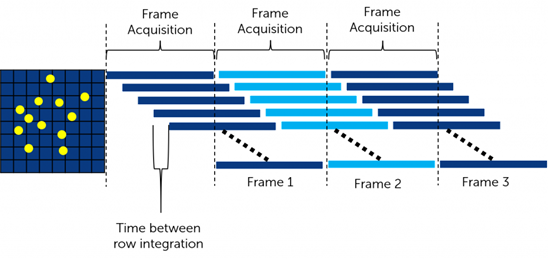CMOS technology is equipped with cutting-edge imaging abilities that are useful for several applications. The question is whether it can substitute the more costly sCMOS (Scientific CMOS) sensors.
CMOS and sCMOS sensors have set the yardstick for value and performance in machine vision in different industries. With this article, you will be familiar with the costs and advantages of each technology for demanding imaging applications.
Related: Comparing sCMOS vs qCMOS Sensors
CMOS vs. sCMOS Sensors:
An sCMOS sensor is usually considered a “next-generation” CMOS sensor. The idea behind implementing the sCMOS technology is to reduce the gap between the latest CMOS sensors and obsolete CCD (Charge Coupling Device) sensors through the initial phases of CMOS development. Initially, several applications couldn’t use the CMOS sensors because of the negotiation in frame rates, resolution, dynamic range, and read noise.
During the introduction of sCMOS cameras, they utilized identical fabrication methods and design principles as the CMOS sensors. However, they incorporated various features that assisted them in tackling the early CMOS defects.
Consequently, sCMOS sensors became perfectly suitable for scientific applications where broad dynamic range, low light performance, and high fidelity were significant.
Since the sCMOS cameras were introduced till now, there has been a noteworthy improvement in the conventional CMOS sensors in the context of their competence to decrease their internal noise and high quantum efficiency. Therefore, CMOS cameras have become worthwhile options for lots of cutting-edge applications.
The majority of CMOS cameras are considerably less expensive than sCMOS cameras. Due to this aspect, many researchers and engineers are encouraged to assess the newest CMOS sensor. This assessment is helpful to them when they want to choose a microscopy camera, cytology/cytogenetics camera, pifluorescence camera, or histology camera for their application.
Also Read: Comparing CCD vs CMOS Sensor
Which one to use -a CMOS or an sCMOS Sensor?

The choice among a CMOS or sCMOS sensor relies on various factors. When comparing the two, you probably use the epifluorescence illumination since the white light is vivid enough to not depend on an sCMOS sensor.
The choice between the two simplifies when considering the amount of light approaching the camera or a blend of performance parameters exceptional to a particular application. Irrespective of sCMOS or CMOS, you must prioritize a monochrome sensor over the color equivalent sensor. This is because a monochrome sensor offers high quantum efficiency.
Two essential characteristics of sCMOS sensor include backside illumination and big pixels that help decrease the overall noise. Furthermore, sCMOS cameras typically incorporate a Peltier cooling mechanism to reduce thermal noise over extended exposures.
Those cameras equipped with sCMOS sensors also require a high bandwidth interface like CoaXpress or CameraLink with a frame grabber board, making these vision systems more complicated and, therefore, more expensive.
To counteract this, CMOS manufacturers have brought noteworthy enhancements in quantum efficiency, decreasing read noise and employing backside illumination.
The high quantum efficiency improves the incoming photon gathering ability. The reduced read noise guarantees that even the low levels of incoming photos are not lost in this noise.
Peltier cooling is also an alternative in a few CMOS sensors. But the boost in quantum efficiency and decreased noise has made cooling needless for several biomedical imaging applications.
CMOS sensors have been combined with interfaces like GigE, 10 GigE, and USB3. This is one of the ways to keep costs down. Such interfaces don’t need a frame grabber that decreases the cost and complexity of the system. Forthcoming interfaces like CXPX, USB4, and 25/100GigE will help to solve this problem by offering considerably higher bandwidths.
CMOS Sensors are an Affordable Alternative:
The affordable cost is one of the key factors encouraging many system designers and engineers to consider assessing the cutting-edge CMOS sensors over an sCMOS-based system.
In many instances, vision system designers are stunned to get a relevant CMOS camera for a price below $1,000 when a classic sCMOS setup with similar performance metrics could cost up to $10,000.
Irrespective of CMOS or sCMOS type, several camera manufacturers don’t use a single standard when comparing cameras. Therefore, it cannot be easy to compare cameras irrespective of the sensor type.
In the machine vision domain, EMVA1288 is the accepted standard for specifications and measurement of the cameras in America (AIA – American Automated Imaging Association), Japan (JIIA – Japan Industrial Imaging Association), and Europe.
Summing up, sCMOS cameras may be a requisite for cases requiring high-performance levels. However, it would be worthwhile to recognize the crucial performance metrics for a particular application. Moreover, it is essential to establish an unbiased comparison between CMOS and sCMOS cameras before making a choice.
There is continuous advancement in CMOS sensors. Moreover, the price-to-performance ratio between these two camera types is quickly narrowing. If a conventional CMOS sensor can meet your application requirements, it may be a cost-effective alternative.

